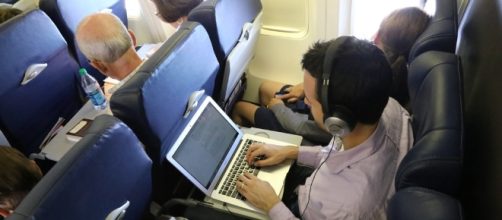There are many different reasons why people bring their electronics with them on airplanes as carry-on items. Some people bring them to use on the plane for either business or enjoyment, while others prefer not to leave them in the hands of baggage handlers. New rules for checked-in electronics are set to become yet another inconvenience added to the many that already make bringing your laptop or tablet with you an ordeal. Apart from the inconvenience of carrying on your device, there is a much more serious concern for people traveling with electronics.
There can be major safety issues for both hardware and data, both with carried-on and checked devices.
In the United States, a recently announced rule bans any electronic device bigger than a cell phone from the cabin on certain flights to the United States. This ban includes laptops, tablets, and cameras. The rules apply to flights from 10 airports (in 8 different countries) in the Middle East and North Africa. The United Kingdom has also announced that they will implement similar measures. The primary concern cited as a reason for the legislature was the potential for bomb components to be smuggled aboard using the devices.
Checking devices can pose many risks
The checking-in of electronic devices can make them vulnerable to damage, loss, and even hacks.
There are a number of things to consider when traveling with electronics in order to protect the devices themselves as well as the information on them. Airlines themselves don't want people putting their valuable electronics in checked luggage. Once a bag has been checked, it's tossed from conveyor belts to trucks, to planes, and back all over again.
Throughout this process, sensitive and sometimes delicate electronics can be damaged or even ruined. Many airlines state that they are not liable for lost or broken luggage, electronics included. There are almost without exception warnings about packing valuable and/or fragile items in Checked Baggage. United Airlines, for example, specifically states that passengers should not check any hardware, software, or electronic components/equipment.
All checked baggage goes through an x-ray scan, but TSA employees are allowed to open up any bag and examine its contents as well. Often, laptops and other electronic equipment need to be removed from bags and placed in separate bins for hand-inspection.
Keeping your data safe
The best way to keep your data safe is to not check a computer. When bringing a device onto the plane (assuming that you are allowed to), make sure you at least set up passcodes or fingerprint scanning locks. Additionally, enabling a remote wipe protocol will allow you to clear the device of all data in the event of it being stolen. Before leaving for the airport, perform a full backup of important data so that if you do wipe your computer, you will still be able to access your information.
Experts also recommend shutting computers down completely when not in use, as opposed to putting it to “sleep.”
When traveling with a work-issued computer, it’s always a good idea to check your company's security policy. Some company’ IT departments mandate that you don't check laptops at all.

